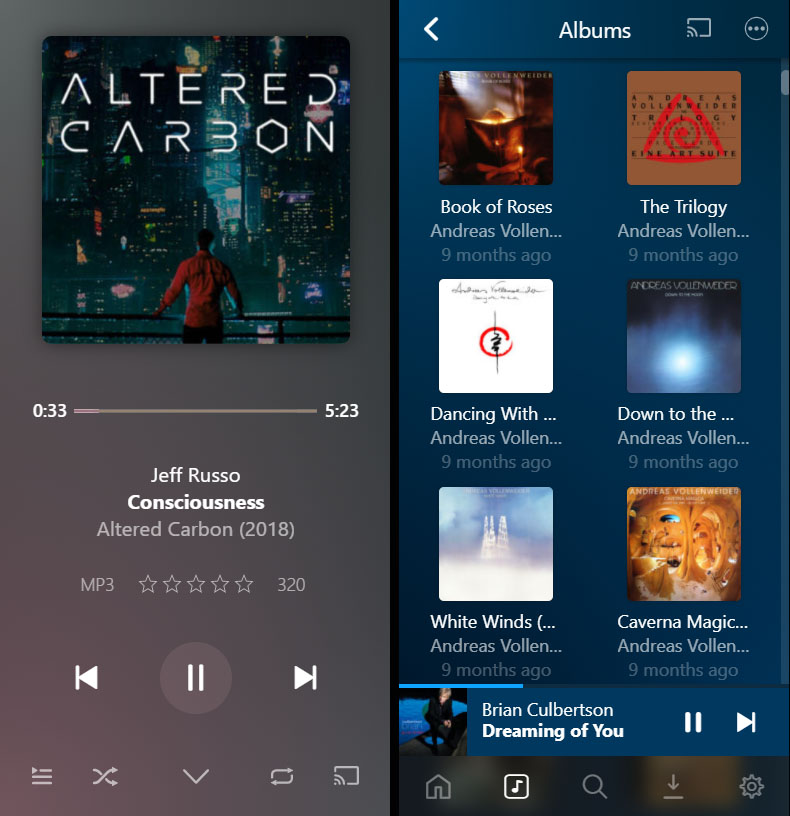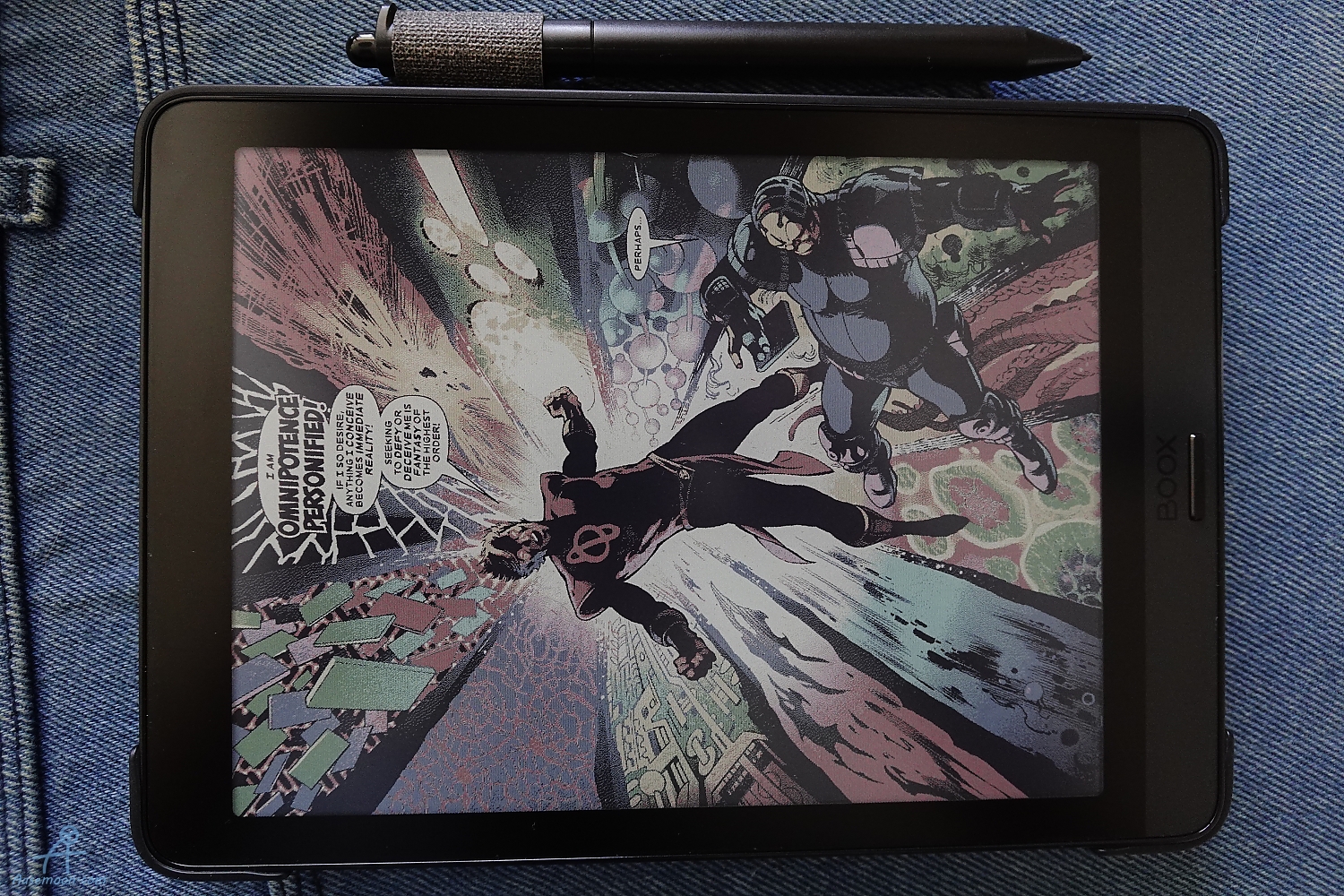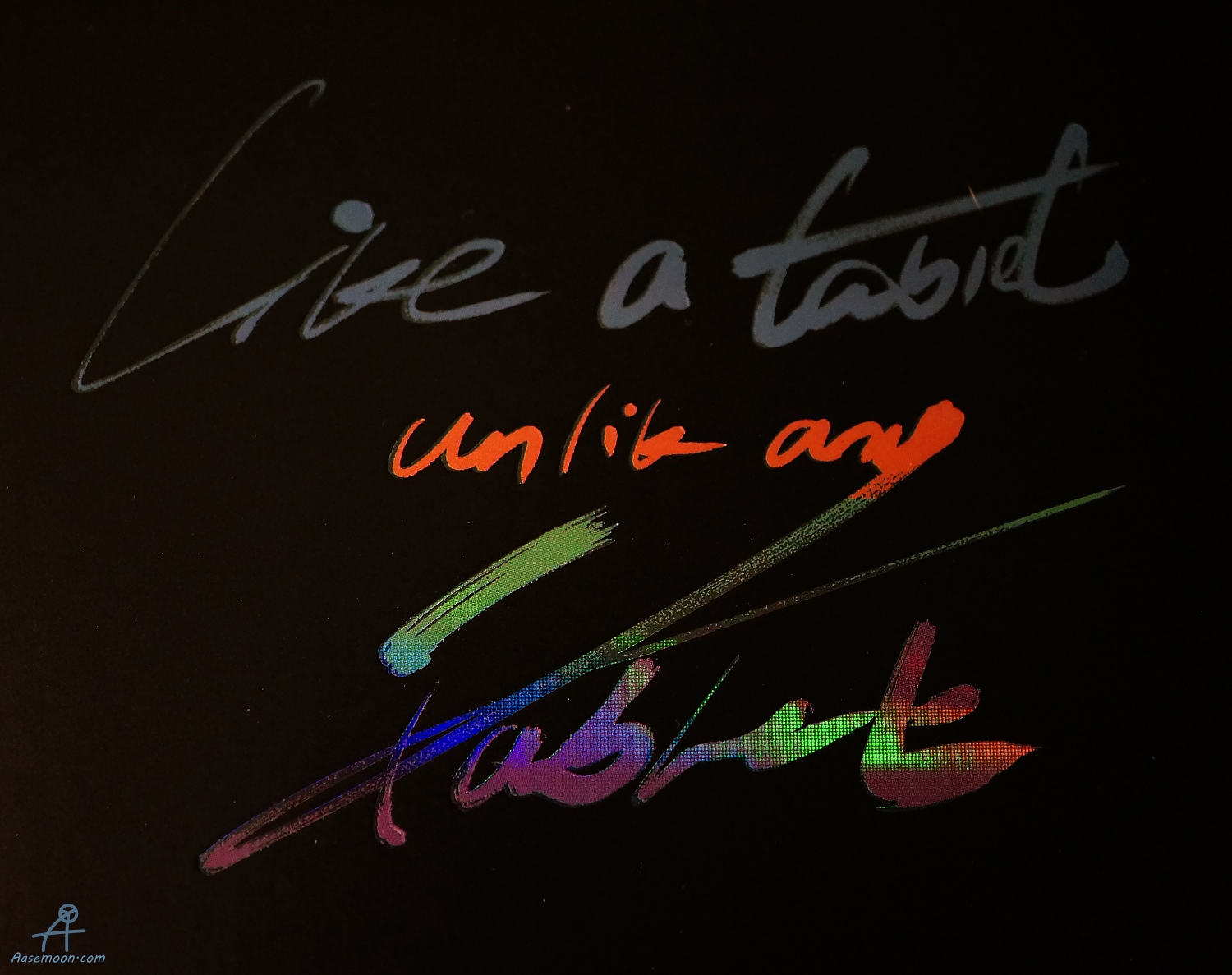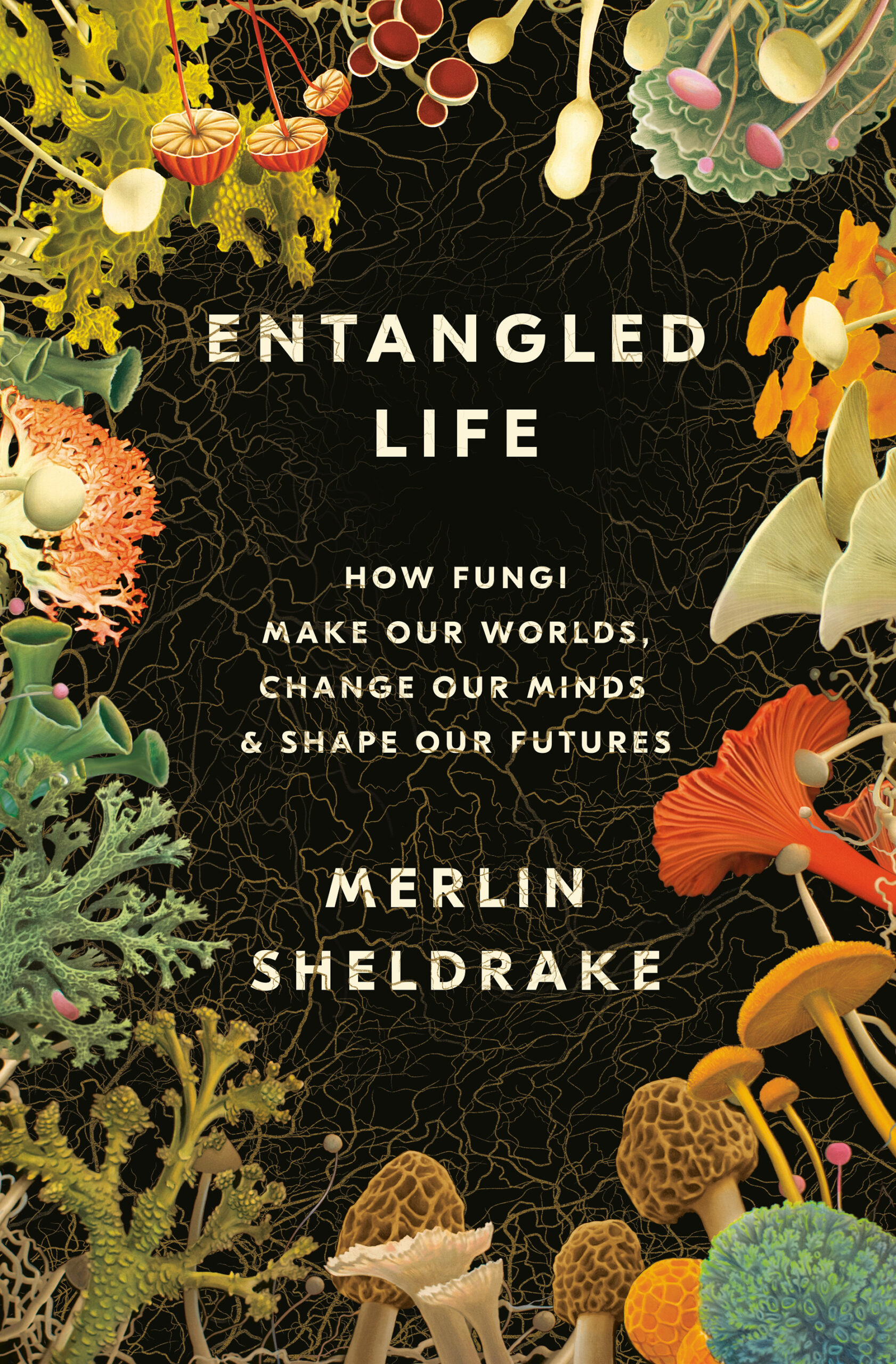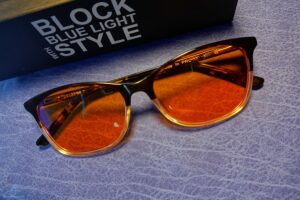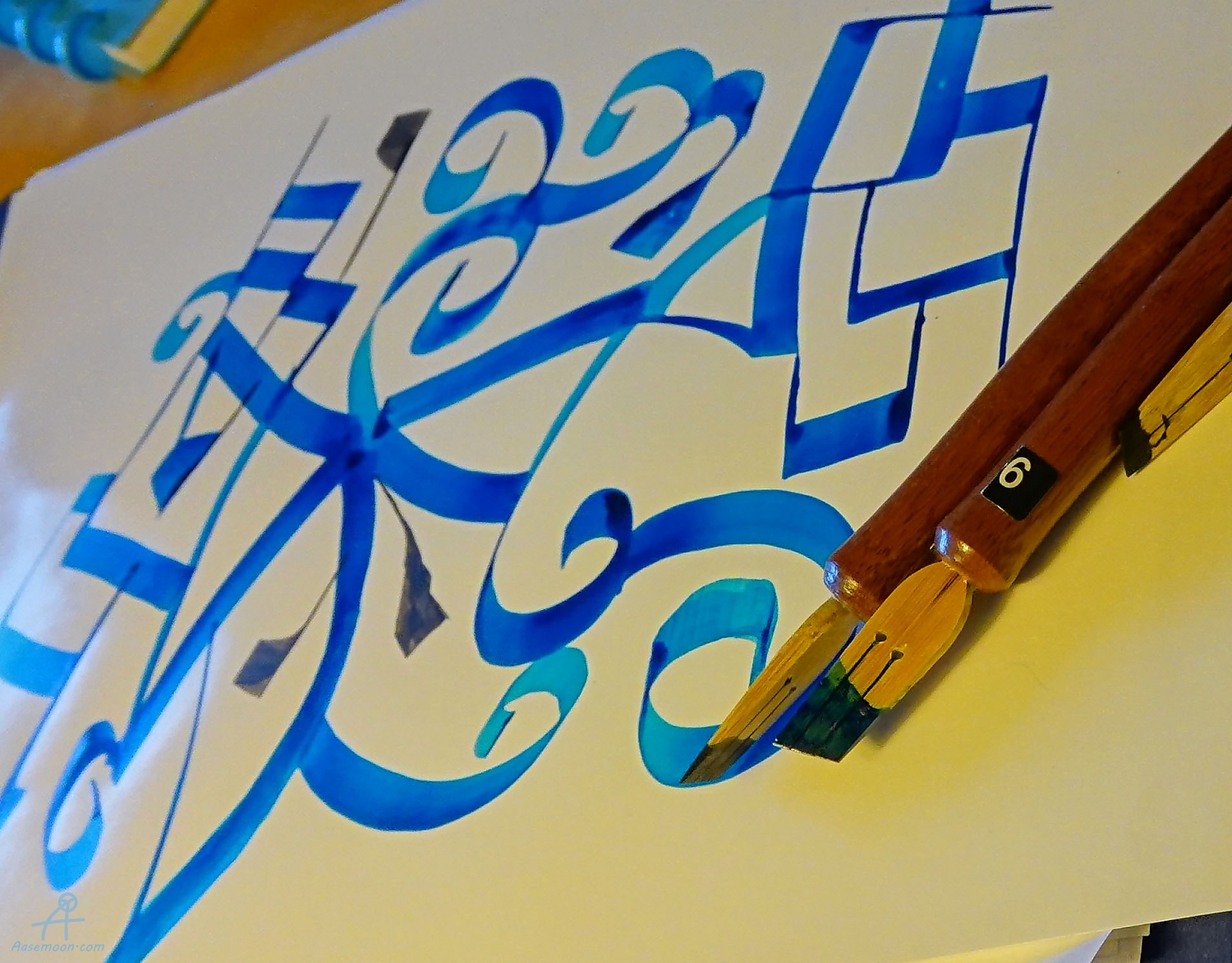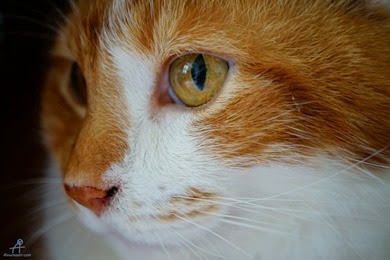The Blue Blog
The million year old blog
Onyx Boox Nova Air C: Yearly E-Ink Tablet Upgrade Review!
Author: Aasemoon24 May
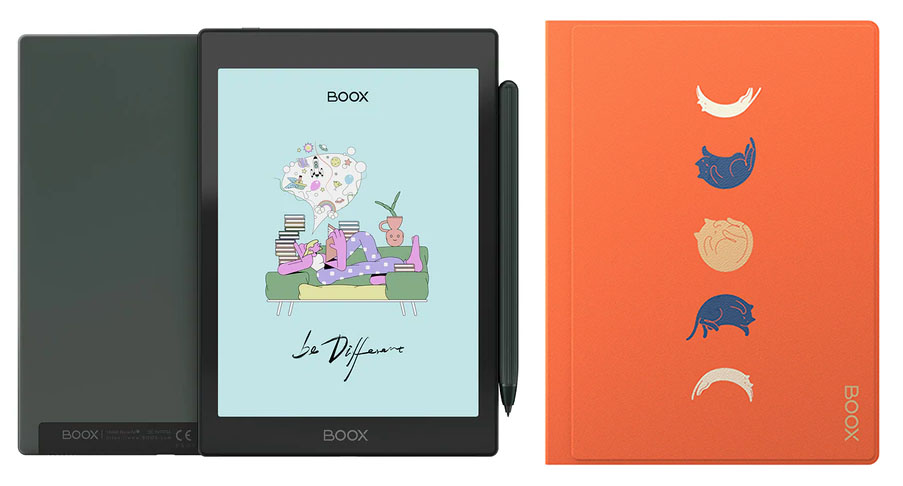
So it’s that time of the year again, apparently.
Onyx has recently released Nova Air C, the successor to their Nova 3 colour. I’ve been using it for about a month now, and I absolutely LOVE it.
Last year when Onyx released the Nova 3 Colour, I was positively ecstatic. As may have been obvious by the review I wrote of it. When I heard about the plans to release the Nova Air C, I was actually wondering how different the new model could possibly be, given the giant leaps that Nova 3 Colour had already taken, less than a year before. But then I heard about a single new feature and it was important enough for me to decide to upgrade. Then it turned out to be totally worth it.
While Nova 3 Colour and Nova Air C share most features, there are a few key differences. The first thing that got my attention even before turning on the device, was the quality of the screen. The AG glass flat cover-lens gives somehow gives the screen a much more sturdy as well as clear look. The general look of the device is just neater somehow, with the sharper edges and the thinner body.
I also find the redesign of the cover to be a much bigger deal than it may seem to be upon the first glance. The cover is now simply attached to the side of the device via [pretty strong] magnets. This means that one can easily attach / detach the cover at any moment. The cover also has a couple of buttons with customizable functions, that can come pretty handy. The cover is also far sturdier than the previous design. The thin plastic on the back of my Nova 3 Color recently cracked, which wasn’t at all a surprise. The new cover design manages to both protect the device and avoid it heating up. In Switzerland unfortunately the orange kitty design cover is not yet available, but I was able to order it from Canada. It’s really very cute.
The new pen is also sturdier, and it attaches to the side of the device via another magnet. This also proves to be priceless in practice.
Once I turned the device on, I had another pleasant surprise waiting for me. As a result of a much better colour contrast and saturation, the colours seem much more natural and vivid. With the Nova 3 Color, I could arrive to fairly good colour vividness after changing the contrast and saturation settings for the particular context. With Nova Air C, so far I have very rarely [perhaps twice in a month of heavy use] had reason to tweak colour settings.
And then there’s of course the feature that swayed me to upgrade in the first place. The Nova Air C has both warm and cold front lights. This is a very big deal, if you do as much with the tablet as I do, including reading ’till very late at night and with tired eyes.
With the arrival of Nova 3 Colour I pretty much shifted to doing just about anything I previously did on a normal tablet, to the E-Ink tablet. In the past month with the Nova Air C I’ve done even more of that. From reading books and comics to taking notes, browsing the web, using maps, listening to music and using work related apps, I’ve done just about everything imaginable on this tablet and it hasn’t let me down yet. I’d say the upgrade was totally worth it.
Hello Plexamp, Goodbye Spotify
Author: Aasemoon15 Dec
I love Plex. It’s easily the best tool for managing all my personal media. Streaming videos and accessing my photo library from anywhere and on any device. I’m also a pretty big fan of all the nice little tools that Plex Labs offers for nerds like me. But by far the most important use of Plex for me, is streaming my absolutely massive music library.
In case my previous posts haven’t made it clear, I’m not a fan of the music streaming services out there. I’ve tried quite a few of them, tried their subscription plans, and eventually have rid myself of them. The last one I’ve retired is Spotify. I really, really don’t like Spotify.
First there’s the issue of the unethical treatment of musicians. I’ve heard complaints from many musician friends in this regard, but I didn’t know exactly how bad things were until some time ago I collaborated with a friend on an album, which he later put on Spotify. That’s when I got the full picture of what Spotify’s policies [including the infamous Pay for Play] actually translate to, for musicians.
Then there’s the issue of [subscription] audio quality. Let’s just say that the quality is effectively not as advertised [ton of articles out there explain the technical reasons for this]. This is a pretty big deal for me as an audiophile who can hear the difference. But even worse is all the missing music. Many musicians have removed their music from Spotify due to the said ethical /quality issues. Many independent musicians never end up on Spotify. And there’s also regional limitations as to which albums you can access.
I knew that eventually I’d be moving away from streaming services altogether in favour of streaming my own library. With the release of Plexamp last year this has finally happened.
Plexamp is a music app for Plex, developed by Plex Labs. It’s available for all my devices, and it’s pretty darn perfect. Plex server streams lossless audio and Plexamp has no issues with the playback of massive FLACS, so I don’t have to put up with compromised audio quality anymore.
Streaming my own library means that I have access to all the great music that would never be available on Spotify. Music that would normally be available only through Bandcamp, netlabels, demoscene related websites, and so on. As well as everything else that’s missing from Spotify due to political or ethical reasons. It also means that when I pay for music, the money ends up in the right place. It means I don’t support companies that mistreat artists.
Another interesting bit is that the Plex server connects to Last.fm, which means that no matter which Plex app on which device you use, the music you play always gets scrobbled. It’s also possible to share music from your server with friends who also use Plex. Offline listening is also a possibility since the albums or entire collections are downloadable.
And then, let’s face it, there’s the very important matter of the eye candy. And Plexamp is absolutely that. The app [on every device I’ve used it on so far] is well designed, user friendly and really quite good looking.
I will probably still end up using Spotify et al when I’m searching for a piece of music that’s not yet in my library. But for any actual listening purposes, it’s now just Plex/Plexamp and I’m absolutely loving it.
Onyx Boox Nova 3 COLOUR!!! [And a “short” history of me and E-Ink. =P]
Author: Aasemoon2 Jul
Holy cow they finally did it! Finally a decent COLOUR E-Ink tablet. And it only took… well…. too many decades. I’ve been waiting for this my whole life!
When Sony released their first English language E-Ink ebook reader [PRS-500] in 2006, it turned my life upside down. I had been badly in need of a device like that. Since childhood I’ve always been an avid reader [to put it quite lightly] and paper books were always a massive hassle. The weight of carrying a number of them around, the space needed to keep them “all”, and then of course there was the matter of moving from country to country which unfortunately resulted in leaving many beloved books behind. I had already switched to ebooks out of necessity, but it wasn’t working very well. I had no intention of destroying my eyes by staring at a screen for hours, so let’s just say that I was wasting massive amounts of printer paper. And literally daydreaming about an E-Ink reader.
Of course the technology already existed and a few companies, including Sony, had already released such devices in the Asian market, since at least a couple of years earlier. But for whatever reason, the benefits and general point of E-Ink devices have always apparently been clearer to people in that part of the world and so, the English speaking market has always been quite inconveniently lagging behind.
I was fascinated by the technology and the difference it would make for people like me. And so I really really [and I mean reeeeeeeeally] wanted an eReder. When PRS-500 finally got released in the US, some 10 minutes later I had one. And oh my god I loved it! The simple functionality of that ebook reader really made my life so much easier. Being able to carry around a library in my pocket, and reading for hours without worrying about destroying my eyes, it was fantastic! No more leaving books behind, and hey, killing far less trees!
I was a huge fan of Sony’s line of ebook readers and E-Ink technology in general [enough that I even got involved in the development for a short time]. Each Sony eReader that came out could do more and better than the previous. They really were putting a lot of effort into it. Around 2008, when papers and articles related to colour E-Ink tech started showing up on the web, I was pretty sure Sony was going to release a colour ereader soon enough, putting an end to the final shortcoming of these devices. Unfortunately that never happened.
Instead to my disbelief and disappointment, in 2013 Sony put an end to their eReader line. Simple fact was that E-Ink devices never gained a lot of popularity in the western market. I can’t tell you the number of times [both in North America and Europe, though interestingly never in the Middle East] I had people ask me why the heck I was reading on this strange monochrome device, instead of all the colourful tablets out there. It was frustrating to watch, but the coin never seemed to quite drop for the general population in certain parts of the world. And Sony didn’t see a point in continuing the development of such devices when they only appealed to a bunch of nerds like me.
Of course the mess made by companies like Amazon and devices like Kindle Fire didn’t help matters at all. Amazon and a couple of other companies calling their very much normal blue light emitting LCD tablets “ebook readers” created even more of a confusion and less interest in the E-Ink technology by completely disregarding the reasons E-Ink devices were created in the first place. Yup, I’m talking about the generally overlooked matter of one’s ocular health, the “small” matter of staring at a type of screen that as it happens DOESN’T destroy one’s eyes.
So the following so many years were frustrating. Colour E-Ink devices became less and less of a discussion, and while there was and even the monochrome ebook readers available were devolving and generally of terrible quality. I tried a variety and it was just sad. The last one in the long line of useless devices I tried was the Kobo Aura H2O [2nd edition] which was supposed to be oh so wonderful, and turned out to be the kind of pain that nearly brought me to tears. I went from Sony devices that could deal wonderfully with various formats including PDFs, had great note taking, audio and….. functionalities to a piece of $£I@ that needed to be rooted and modified in a million different ways to do anything at all.
However meanwhile in Asia, the interest in the technology kept growing, the E-Ink foundation continued R&D and eventually in 2018 E-Ink Kaleido was announced. After that it took a rather short time for colour ebook readers / tablets to start popping up in the Asian market. The first several attempts were not great, but eventually as of last year some decent-ish readers started making appearances in Asian electronics shows.
I kept watching the development of E-Ink devices on the other side of the pond and wondering if the only solution would be to eventually find a way to get my hands on Chinese E-Ink tablets and “somehow” find my way around the language issues. So you can say I was quite excited when suddenly I started seeing a couple of brand names, that previously I only read about on websites like goodereader.com, started making appearances on the websites of a few Swiss retailers. At the time I was near tears with the Kobo and I decided to give the Onyx Boox Nova Pro a try.
Well, I have to say that the Nova Pro was already pretty much years ahead of anything produced by the English speaking market. A true E-Ink tablet with great capabilities such as note taking, audio, Bluetooth and WiFi, and just about anything else a decent Android tablet would have. While it was clear that some things were still under development [using the device with wired headphones needed some tweaking and that kind of thing…], I was very very happy with the device. And so, as more and more colour E-Ink devices became available in Asia, I knew it was only a matter of time until Onyx went for it too.
And yes, they did. Oh they so did. Onyx Boox Nova 3 Colour was released in March, and in April I got my hands on it, WOOHOOOWW! As you can imagine my expectations were ridiculously high, and I’m happy to say the Nova 3 Colour has managed to reach all of them! The device is a dream come true.
To start with, the colours have a much better quality than I was expecting. They are sharp and vivid [as you can see in the picture], and ghosting is really minimal. Especially in A2 screen mode, which was pretty much designed for reading comics et al, there’s next to no ghosting. The hardware specs have had quite the upgrade [even since the Nova Pro, you can see the full specs here] and running Android 10, so at this point it’s possible to use just about any Android apps on the device. And yes, it’s actually possible to watch videos on the device which blows my mind completely. The audio quality is amazing, and the device even comes with a voice recorder. Note taking is quite smooth and the included pen has also had a design upgrade.
The device is something I have quite literally been waiting for my whole life, and I couldn’t be happier with it. Now I just wait for Onyx to release a colour version of the Max Lumi [or hopefully something even larger?!] so that I can finally have E-Ink displays for my PCs!
Entangled Life by Merlin Sheldrake
Author: Aasemoon21 Jun
I just finished reading Merlin Sheldrake’s “Entangled Life” for the second time in a row. I read it twice because on one hand there was quite a lot to unpack in there, and I ended up looking up a lot of other literature in parallel. And on the other hand I had way too much fun reading it. It’s a [mostly] science book that reads like a science fiction. And while that is often enough the case while reading books on mycology, the author’s language is somehow particularly fitting to the topic, which makes the book even more delighting.
The book offers a magical trip down the rabbit hole of fungi and mycelial networks, and explores the many incredible aspects of their relationship with the universe around us. While there’s quite a lot to learn in there, evern for someone who already knows their fair share on the topic, the book also tells amazing stories of the author’s own experiences as well as that of other mycology researchers and enthusiasts. All in all a truly enjoyable read and totally recommended.
THL Sleep Blue Light Blocking Glasses
Author: Aasemoon18 May
A couple of weeks back I received this lovely pair of Cat Eye style THL Sleep blue light blocking glasses in my mailbox, as a gift from it’s designers. I’ve been using the pair just about every evening since I received them, and here’s what I think so far.
Long story short, I love them.
In the past couple of years I looked into quite a few of the blue light glasses that popped up in the market, and I generally wasn’t a fan. While the idea is pretty important and I definitely did feel the need for a pair, it seemed like not much time was spent on the design and details of even some of the most pricy pairs out there. Mostly I just wasn’t a fan of the frames. From some harsh nose pads and temple tips to the kind of weight that wouldn’t allow the pair to stay still on the top of the rather smooth curve of my nose bridge. On the other hand the polarised and battery powered ones created issues with polarised screens, and a whole heck of a lot of them come without UV protection which is not a great idea since you may still want to be wearing the glasses while outside and while there’s still sun in the sky.
Then I had a chance to speak with one of the founders of the Swedish THL Sleep, and it turned out they’re designing and producing blue light glasses that actually address pretty much all of the issues I have with the rest of them!
The Cat Eye pair I’ve received are lightweight, super comfortable and quite pretty, and from what I’ve seen on their website, it seems to me like the same can be said for the rest of their designs. Without being polarised, they manage to filter out 99,5% of the blue and over 70% of the green light spectrum. The glasses come with anti-glare coating, and offer full UV protection. And I have to say I’m quite happy with the effects of wearing the glasses. While exposure to blue light has never had any effect on my sleep, I definitely feel that my eyes get far less exhausted after many hours of staring at screens.
The real pity is that with all the digging I did for a suitable pair of blue light glasses, I never actually came across THL Sleep, until I was directly told about them. The one company that’s producing such glasses in great quality, and there’s hardly any information about them out there. So if any of you biohackers et al are looking for a nice practical pair, do check these guys out.
Little, Big by John Crowley
Author: Aasemoon17 Mar
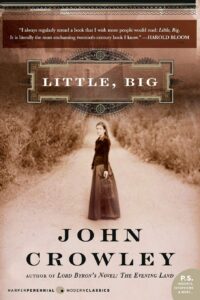 Never before in my life, have I ever read a book that talked so incredibly much, without saying anything at all.
Never before in my life, have I ever read a book that talked so incredibly much, without saying anything at all.
I picked up this book because I kept hearing good things about it, and because I came across reviews that compared it to another couple of books that I have enjoyed. So I decided to give it a try. What a mistake. One review I read recently, said something about a 500-something page book feeling like thousands of pages. That is so true.
About 80% of the book is empty, pointless, over the top descriptions. So so many words in such pretentious language, meaning to sound all deep and meaningful, and in the end communicating absolutely nothing of value. Don’t get me wrong, I have enjoyed my share of well written books that feel more like paintings. This just wasn’t one of them, there was no beauty, just words upon words upon words.
And then there was all those brackets. Right in the middle of all those run on descriptions, there were brackets injecting other run on descriptions. About 3 times on each page.
As for the actual story of the book, well…. there is one. A very weak one. It’s a fairy tale that, I think, is meant to be some kind of metaphor for life, or some such. But it’s just a very bland story in the end. The whole tale could have been told in about 20 pages. And yet there were 538. The gosh darned book took me forever to read, because I simply had no interest in reading it and I kept reading other books in between. It really did feel like thousands of pages.
So I guess it’s clear that I don’t recommend the book. If you happen to have a somewhat similar taste to mine, it’ll be torture and a huge waste of your time.
Ars Nova Field Easel
Author: Aasemoon26 Nov
 This is my first ever field easel. When I wanted to purchase it, me and a couple of friends had quite some discussions about the pros and cons of such easels. So now after some months of using it, I figured I’d give you an idea of what it’s like.
This is my first ever field easel. When I wanted to purchase it, me and a couple of friends had quite some discussions about the pros and cons of such easels. So now after some months of using it, I figured I’d give you an idea of what it’s like.
Long story short: I can’t believe I’m saying this, but it’s great!
I absolutely looooove the look and feel of them old-school pretty pretty wooden easels. I didn’t think I would be able to replace that [and it’s still not out of the question that I’d eventually get yet another those given how much I love them]. Having said that… oh my god, I am so enjoying the freedom the field easel is offering!
To start with, it’s obviously lightweight and easy to carry around. That is, even when you’re in the middle of something and have a canvas on. And when you’re done, it doesn’t need to be a fixture of your living space. Folding it and putting it back in it’s carrying case takes only a few seconds.
One of the most important points of discussion was the question of stability. I’ve been outside with the Ars Nova easel in the wind, and there was next to no shaking. The telescopic legs are surprisingly and impressively quite stable. The weight is about 1.3 kg, which makes it very easy to travel with. And it can handle up to the weight of 8 kg, which is actually quite a lot for an easel.
There are of course a couple of shortcomings with this specific model too, it’s not all perfection. One issue is, just like many other easels, if your frame is somewhat small, you can’t fully fix it on the easel since there’s a limit to how far up you can move the stand. With quite a few of my frames, the frame doesn’t reach the top clip. This is normally not an issue, but it could become one if you’re outside and it’s seriously windy. [But if it’s that windy then you’ll probably have bigger problems.]
And tilt adjustment doesn’t really exist. You can only adjust tilt by modifying the opening angle of the legs [but interestingly, the legs are so stable that this actually does work!!].
As far as field easels go, the Ars Nova is a mid-price and probably mid quality one. For me it was mostly an experiment to see if I even like field easels. But now that I’m enjoying it so much, I think I’ll be on the lookout for better quality field easels with more functions. But if you’re looking for something rather cheap and very functional, the Ars Nova is very much recommended.
Changeling: The Autobiography of Mike Oldfield
Author: Aasemoon13 Nov
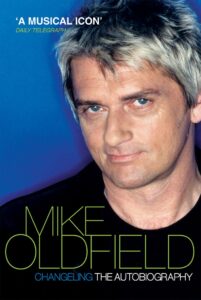 I have no idea why it took me so long to finally read this book. This is my all time favourite musician, I grow up with his music, and yet it took me until now to read the autobiography. And now after finally reading it, somehow I wish I had read it sooner.
I have no idea why it took me so long to finally read this book. This is my all time favourite musician, I grow up with his music, and yet it took me until now to read the autobiography. And now after finally reading it, somehow I wish I had read it sooner.
I’m not going to get into what Oldfiend’s music means to me or why, that’s too complicated for words. But let’s just say that my whole life, his music has been my sanctuary, my way of getting through tough times, and a description of my feelings.
So it’s been quite meaningful reading about where the magic comes from. It’s fascinating reading the stories behind the albums and the author’s own feelings and state of mind when he was coming up with each piece of the music. And I also really enjoyed the author’s language. The honesty, simplicity, and the “lessons learned”. The book is a wonderful journey and honestly, I think it’s totally worth reading even if you’ve never listened to a single track of Mike Oldfield’s.
Orb Gaming Pocket Retro Game Console
Author: Aasemoon13 Aug
=D So I just received this in the mail [for winning a certain digital arts related competition]. It’s an interesting choice seeing that it looks like the tiny version of my old Pegasus, that I’m still a huge fan of.
Aside from being very cute, it also turns out to be quite entertaining. Some 150 retro 8bit games, respectable graphics on that tiny LCD and even decent enough sound quality! Despite being quite tiny, the buttons are quite comfortable for me.. though I’m not sure what happens if you have bigger fingers than me, I guess it could be a bit of an issue. It requires 3 AAA batteries, though it doesn’t seem like it drains the batteries that fast. Altogether it’s a fun little gadget.
So thank you guys, I’m enjoying this quite a bit! =D
China Ink
Author: Aasemoon5 Aug
Given how increasingly hard it’s been to get my hands on colour soot ink, I’ve been experimenting with some China ink. And I have to say I’m very pleased with the results. Flows very well on various types of paper. Looks amazing on calligraphy paper and works great with my bamboo pens. It takes some getting used to as it’s far more slippery than soot ink, specially on calligraphy [or photography] paper. But once you manage to take control of it, the outcome is shinier than that of soot ink. Of course the whole slipperiness of it can make things a bit difficult for complex calligraphy [like Persian calligraphy], especially if you’re a stickler for the rules. But I’m not, so…..
In case anyone would like to give it a try, this is the China ink I’m getting from boesner.ch. The colour chart looks rather small, but keep in mind that these inks can be mixed quite nicely for a far larger pallette.
https://www.boesner.ch/shop/zeichnen/farben/tusche-tinte/zeichentusche
